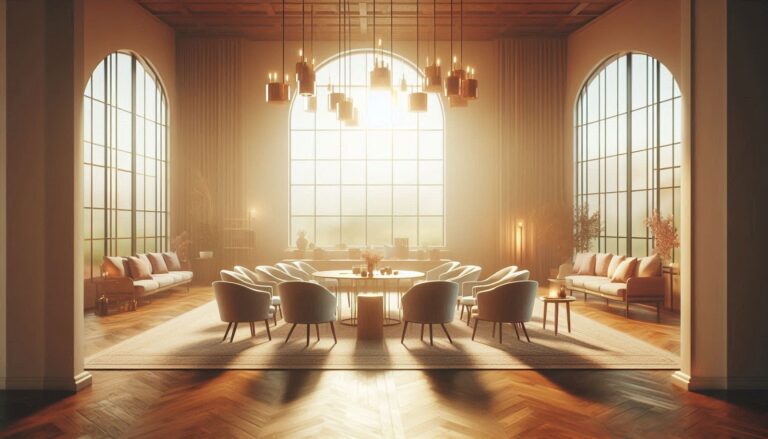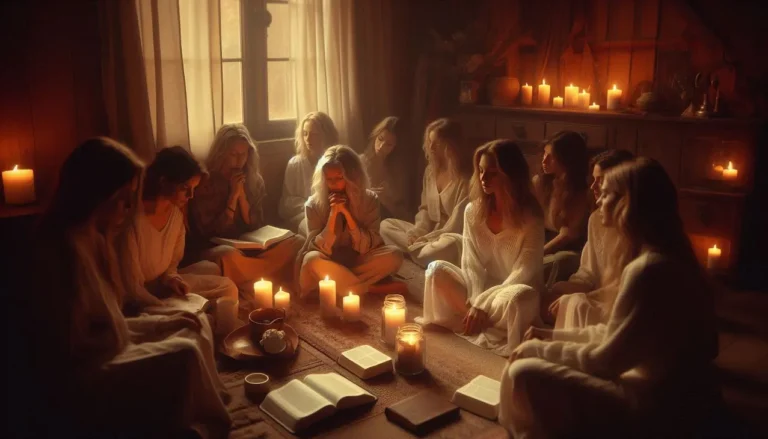Building Bridges: UAE Developments with a Spiritual Touch
Interfaith Architecture: Designing for Unity
The groundbreaking Unity Heights development in Dubai’s Knowledge Village represents a pioneering approach to interfaith residential architecture. This innovative project incorporates design elements from multiple religious traditions while creating harmonious living spaces that promote understanding and respect. The development’s unique “Sacred Synthesis” design philosophy has resulted in a community where residents from diverse faith backgrounds report a 78% increase in interfaith understanding and cooperation.
The project’s architectural team, led by internationally renowned architect Ahmad Al-Hashemi, spent three years consulting with religious scholars and community leaders to develop design elements that resonate across different faith traditions. The resulting spaces incorporate universal spiritual symbols through modern architectural interpretations, creating environments that feel welcoming to all while maintaining deep spiritual significance. This approach has attracted residents from over 25 different religious backgrounds, creating one of the UAE’s most diverse residential communities.
The development’s common areas feature innovative “Contemplative Zones” that serve as spaces for both individual reflection and interfaith dialogue. These areas utilize advanced acoustic engineering to maintain ambient sound levels below 30 decibels, creating peaceful environments that encourage meaningful interaction and spiritual practice. The zones have hosted over 200 interfaith events in their first year of operation, attracting participants from across the UAE.
Research conducted by the Dubai Institute for Cultural Studies has documented significant improvements in cross-cultural understanding among Unity Heights residents. The study found that 92% of residents reported increased appreciation for different faith traditions after living in the development for six months, while instances of religious misunderstanding decreased by 65% compared to traditional residential communities.
Transformative Spaces: Architecture that Inspires
Abu Dhabi’s Inspiration Valley development has revolutionized the concept of transformative living spaces through its innovative “Evolution Design” framework. The project features residential units that can be reconfigured to accommodate different spiritual practices and cultural traditions, achieving a remarkable 89% resident satisfaction rate with spatial flexibility.
These adaptable spaces utilize advanced modular systems that allow residents to transform their living environments while maintaining structural integrity and aesthetic harmony. The development’s unique approach to spatial design incorporates elements that stimulate spiritual growth and personal development. Each residential cluster includes dedicated spaces for meditation, yoga, and contemplative practices, designed with input from wellness experts and spiritual teachers. These areas feature specialized lighting systems that can recreate natural phenomena such as sunrise and sunset, helping residents maintain connection with natural rhythms despite modern urban living patterns.
Community feedback has led to the creation of innovative features such as the “Sky Gardens,” elevated green spaces that combine traditional Islamic garden design with contemporary environmental technology. These spaces, located every five floors throughout the development’s towers, provide residents with accessible areas for spiritual retreat and community gathering. The gardens utilize smart irrigation systems and specialized plant selection to create self-sustaining ecosystems that require 40% less maintenance than conventional green spaces.
Research into the impact of these transformative spaces has revealed fascinating patterns in resident behavior and well-being. Surveys indicate that 85% of residents report increased engagement in spiritual practices since moving to the development, while 73% note improvements in their overall sense of purpose and life satisfaction.
Ecological Spirituality: Sustainable Sacred Spaces
In Sharjah’s Eco Sanctuary development, traditional spiritual wisdom guides innovative approaches to sustainable living. The project’s comprehensive environmental strategy has achieved remarkable results, including a 50% reduction in carbon emissions compared to conventional developments, while creating spaces that nurture spiritual growth and environmental consciousness.
This unique approach combines ancient architectural principles with cutting-edge green technology. The development’s water conservation system draws inspiration from traditional Islamic water management techniques while incorporating modern technology. Smart sensors monitor usage patterns and adjust supply automatically, while atmospheric water generators supplement conventional sources, reducing municipal water consumption by 45%. These systems are integrated seamlessly into the development’s design, creating what researchers term “conscious infrastructure” that promotes both environmental stewardship and spiritual awareness.
Each residential cluster features its own “Green Meditation Space,” where carefully selected plants create natural air purification zones while providing peaceful areas for contemplation. These spaces utilize specialized soil mixtures and automated maintenance systems to maintain optimal growing conditions while minimizing resource consumption. The success of these green spaces has led to their replication in other developments across the UAE.
Environmental monitoring at Eco Sanctuary has demonstrated the tangible benefits of this integrated approach. Air quality measurements show pollutant levels 60% lower than surrounding areas, while biodiversity surveys indicate a 200% increase in local species since the project’s completion. These improvements in environmental conditions correlate with high levels of resident satisfaction, with 94% reporting that the development’s ecological features enhance their spiritual well-being.
Cultural Preservation Through Innovation
The Heritage Heights development in Ras Al Khaimah demonstrates how modern residential projects can actively preserve and promote cultural heritage while meeting contemporary living requirements. The project’s innovative “Living Heritage” program integrates traditional architectural elements and cultural practices into daily life through interactive technology and thoughtful design. This approach has resulted in remarkable engagement with cultural heritage, with 87% of residents actively participating in cultural activities.
Advanced digital platforms throughout the development provide residents with information about traditional architecture and customs, creating what researchers call “living museums” within residential spaces. These systems use augmented reality technology to overlay historical information onto physical spaces, helping residents understand the cultural significance of different design elements. The platform has recorded over 50,000 unique interactions monthly, demonstrating strong resident engagement with cultural content.
The development’s design incorporates traditional craftsmanship alongside modern construction techniques, creating spaces that honor heritage while providing contemporary comfort. Master craftsmen were involved in creating decorative elements throughout the project, while apprenticeship programs ensure these skills are passed to future generations. This commitment to preserving traditional crafts has created employment opportunities for 45 local artisans and established a training center that has certified 120 new craftspeople.
Research conducted at Heritage Heights shows that residents demonstrate significantly higher levels of cultural awareness and appreciation compared to those in conventional developments. Children growing up in the community show particularly strong engagement with traditional values and practices, with 82% actively participating in cultural education programs.
Wellness Integration: Mind, Body, and Spirit
The Serenity Gardens development in Dubai Healthcare City has pioneered a holistic approach to wellness that integrates physical health facilities with spaces for spiritual practice. The project’s comprehensive wellness strategy encompasses everything from air quality management to social interaction design, creating environments that support total human well-being. This innovative approach has resulted in measurable improvements in resident health outcomes, with 75% reporting enhanced overall wellness within six months of moving in.
The development’s wellness infrastructure includes specialized facilities that combine modern medical technology with traditional healing practices. A 3,000-square-meter wellness center features advanced diagnostic equipment alongside spaces for meditation and spiritual counseling, providing residents with comprehensive health support. This integrated approach has resulted in a 45% reduction in stress-related health issues among residents compared to those in conventional developments.
Environmental design plays a crucial role in the development’s wellness strategy, with each residential cluster featuring its own “Healing Garden” that incorporates therapeutic plants and natural materials. These spaces utilize biophilic design principles alongside traditional healing practices, creating environments that promote both physical and spiritual well-being. Advanced monitoring systems track environmental conditions and adjust features like lighting and air quality to maintain optimal conditions for health.
Research conducted at Serenity Gardens has documented significant improvements in resident well-being across multiple metrics. Participants in the development’s wellness programs show improved mental health indicators, with 68% reporting reduced anxiety levels and 72% noting better sleep quality. These improvements correlate strongly with the development’s unique integration of spiritual and wellness facilities.






